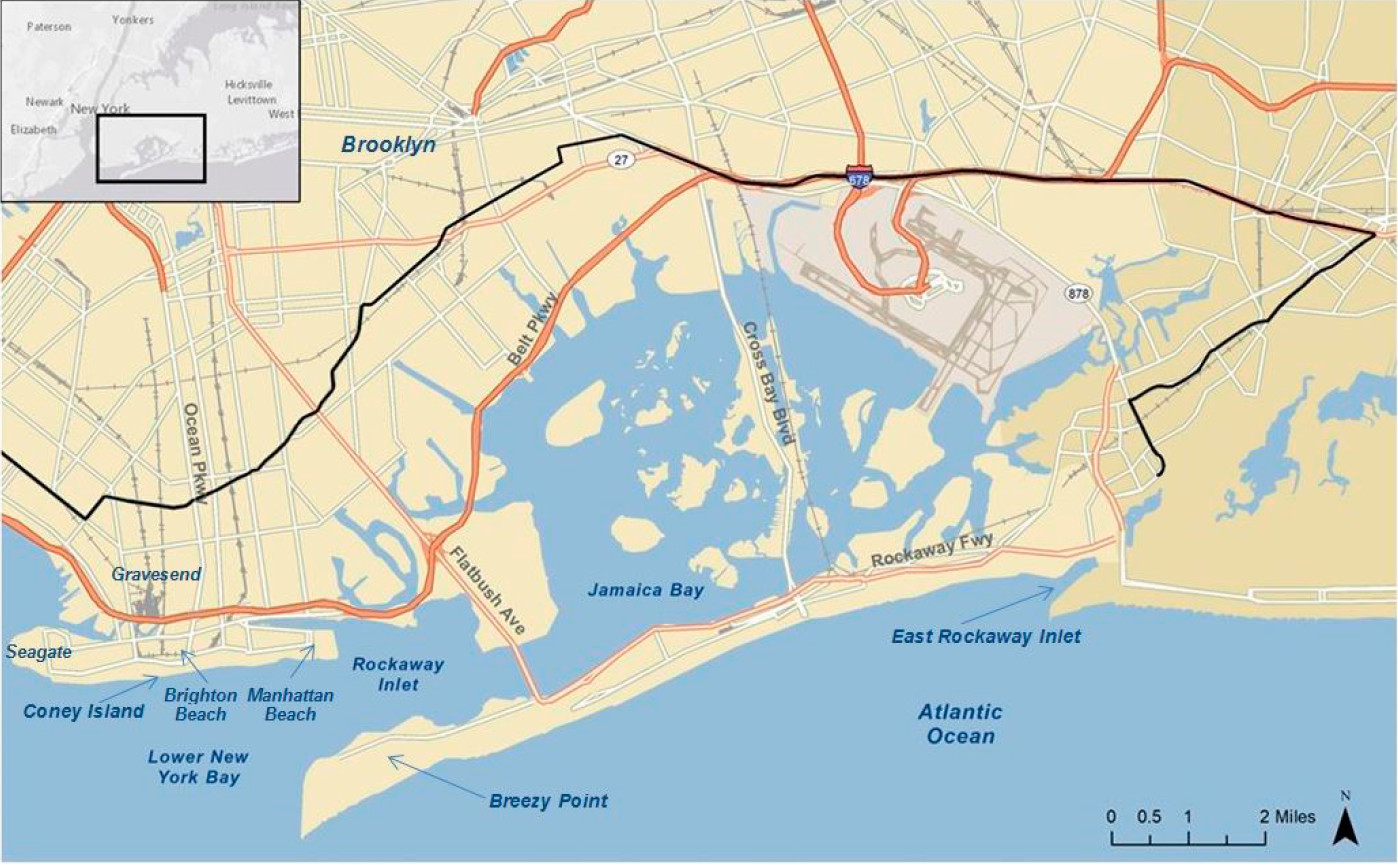Stopping storm surge along the South Shore
Army Corps to hold October meetings in Far Rockaway and Cedarhurst
A plan that could reduce flooding and other damage for more than 850,000 people in Nassau County, Brooklyn and Queens and more than 46,000 homes and businesses is available for public comment, and will be the subject of two meetings next month.
In the Hurricane Sandy General Reevaluation Re-port and Environmental Impact Statement, the U.S. Army Corps of Engineers is recommending ways to reduce the effects of coastal storm surge in the East Rockaway and Rockaway inlets and Jamaica Bay, which affects the Five Towns and surrounding South Shore communities.
The storm surge caused by Sandy in 2012 severely damaged what the Army Corps refers to as “the study area.” The storm hit at nearly high tide, and waves eroded beaches, breached boardwalks and seawalls and broke against buildings in oceanfront communities. Water as high as 10 feet above ground level inundated parts of the study area, according to the corps.
Referring to public comments made at a meeting last September, Daniel Falt, chief of the Army Corps’ Sandy New York branch, said in a news release, “The comment responses were overwhelming in their call for further analysis of one key component of the tentatively sel-ected plan — the proposed storm surge barrier across Jamaica Bay. Conversely, there were also significant calls to expedite and construct a project to help manage coastal storm risk in this area that was hit hard during Hurricane Sandy and remains vulnerable today.”
Based on a cost-benefit analysis, three areas that flood frequently were identified as the most logical beneficiaries of spending on flood protection: the Village of Cedarhurst and the adjacent unincorporated area of Lawrence; Motts Basin North, a portion of the Town of Hempstead near the Queens border; and what is being called Mid-Rockaway, including the neighborhoods of Arverne, Edgemere and Hammels.
Benjamin Weinstock, the mayor of Cedarhurst, said that his village and part of Lawrence were combined because of their proximity to Jamaica Bay and its tributaries. “There is chronic flooding in the area, and it has been said that because of the topography, nothing could be done,” Weinstock said. “We did not want to accept that, and pushed and focused on this as a priority. This is why we have gotten this far.”
Noting that the intersection of Rockaway Turnpike and Peninsula Boulevard is the “heart of the coastal evacuation” route for a sizable portion of the Five Towns, Weinstock explained that the proposal involves building a pumping station either at Johnny Jack Park, a small parcel on Peninsula Boulevard near Lawrence High School, where a Jamaica Bay tributary flows, or behind the Five Towns Mini Golf and Batting Range on Rockaway Turnpike. Nearly 1,000 feet of what the corps called “deep bulkhead” would be installed, following the existing bulkhead line on the southern end of the park. It would continue north along the west side, and connect with higher ground behind the batting range with a 23-foot section of medium floodwall, up to 6 feet high.
In the Motts Basin North plan, a 2-foot floodwall, running north from the intersection of Alemeda Avenue and Waterfront Boulevard in Inwood, would turn east along the south side of Waterfront Boulevard for roughly 540 feet. It would then become a section of medium floodwall above an existing Motts Basin outfall pipe, and run east for 47 feet before becoming a low floodwall for an additional 105 feet.
A valve chamber would be added to the existing Motts Basin outlet, which would include a sluice gate and flap valve to prevent high tides or storm surge from flooding the drainage system. The outlet pipes would be replaced if necessary. A small ditch would provide drainage along the landward side of the bulkhead. The existing and one proposed drainage outlet would be connected to the East Rockaway and Rockaway inlets.
The Mid-Rockaway plan is more comprehensive, and would include a series of natural features such as berms and rock-and-stone structures to help ensure the protection of the shoreline, as well as bulkheads, a floodwall, two pumping stations and the replacement of existing outlet pipes if needed.
The Army Corps has the Mid-Rockaway project costing $222.5 million, including annual operations and maintenance; Cedarhurst-Lawrence, $15.8 million; and Motts Basin North, $3.16 million. Corps officials said that the total cost of recommended plans for the Atlantic Shorefront and Jamaica Bay is $526.5 million. The work is expected to be fully funded, as long as the money is available when the corps’ final report is released in November. If approved, corps officials said, construction for the three expedited plans is expected to begin in late 2019.
Danielle Tommaso, the corps’ project manager for the study, said that the firsthand accounts that Five Towns residents shared last year helped focus the study. “These accounts were very helpful and enlightening,” she said.
The public meetings are scheduled for Oct. 4, at the Rockaway Waterfront Alliance RISE Center, at 58-03 Rockaway Beach Blvd., Far Rockaway; and Oct. 10, at Village Hall, 200 Cedarhurst Ave. in Cedarhurst — both from 6 to 8:15 p.m.
Public comment is being collected until Oct. 22. Email daria.s.mazey@usace.mil or mail to Daria Mazey, U.S. Army Corps of Engineers New York District, Planning Division-Environmental Branch, 26 Federal Plaza, New York, N.Y. 10278-0090.

 44.0°,
Mostly Cloudy
44.0°,
Mostly Cloudy 




